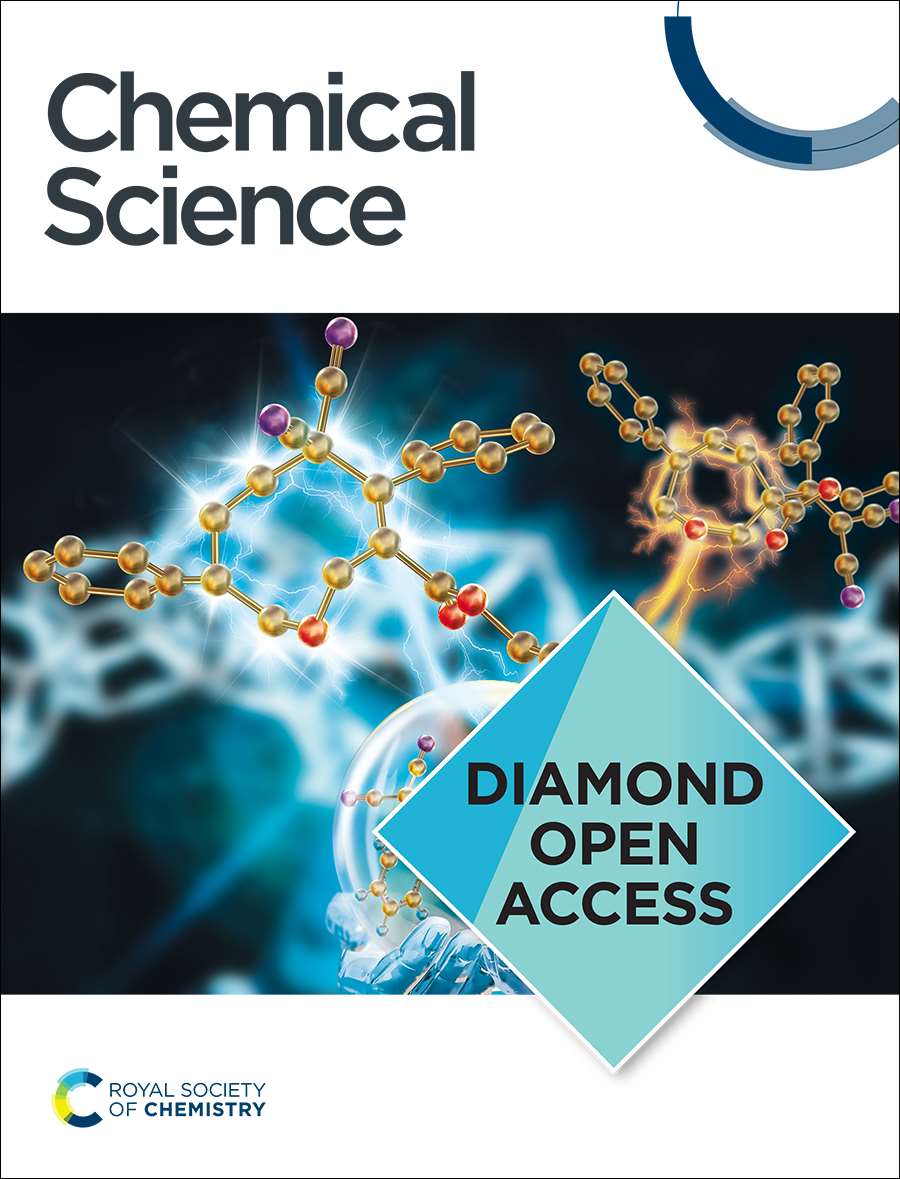Single-Molecule-Level Detection of Interfacial Molecular Structures and Ultrafast Dynamics
IF 7.6
1区 化学
Q1 CHEMISTRY, MULTIDISCIPLINARY
引用次数: 0
Abstract
Elucidating the ultrafast dynamics of interfacial molecules at the single-molecule level is pivotal for advancing our understanding of fundamental chemical and biological processes. Here, for the first time, we realized detection of ultrafast vibrational dynamics by a novel technique that integrates femtosecond sum frequency generation vibrational spectroscopy (SFG-VS) with nanoparticle-on-mirror (NPoM) nanocavities (NPoM-SFG-VS). Using a symmetric stretching vibrational mode of para-nitrothiophenol (νNO2) as a probe, we have successfully identified signals from self-assembled monolayers (SAMs) comprising ~60 molecules, demonstrating the single-molecule-level sensitivity of the NPoM-SFG-VS. The dephasing time and vibrational relaxation time of νNO2 at the single-molecule level were determined to be 0.33 ± 0.01 ps and 2.2 ± 0.2 ps, respectively. By controlling the solution concentration used to prepare SAMs (C), a correlation between peak frequency of νNO2 and localized concentration is established. It was found that single-molecule-level detection was achieved at C ≤ 10-10 M. With this protocol, microregion distribution of interfacial molecule number can be mapped using NPoM-SFG imaging. This work provides insights into the structures and vibrational dynamics of individual interfacial molecules, aiding in precise engineering of surface properties and reactivity.在单分子水平上阐明界面分子的超快动力学对于促进我们对基本化学和生物过程的理解至关重要。在这里,我们首次利用飞秒和频发生振动光谱(SFG-VS)与纳米粒子镜上(NPoM)纳米腔(NPoM-SFG-VS)相结合的新技术实现了对超快振动动力学的探测。利用对硝基苯硫酚(νNO2)的对称伸展振动模式作为探针,我们成功地识别了由约 60 个分子组成的自组装单层(SAM)的信号,证明了 NPoM-SFG-VS 的单分子级灵敏度。经测定,νNO2 在单分子水平上的消相时间和振动弛豫时间分别为 0.33 ± 0.01 ps 和 2.2 ± 0.2 ps。通过控制制备 SAMs 的溶液浓度(C),νNO2 的峰值频率与局部浓度之间建立了相关性。研究发现,在 C ≤ 10-10 M 时可实现单分子级检测。利用这一方案,可以使用 NPoM-SFG 成像技术绘制出界面分子数量的微区分布图。这项工作有助于深入了解单个界面分子的结构和振动动力学,有助于精确地设计表面特性和反应性。
本文章由计算机程序翻译,如有差异,请以英文原文为准。
求助全文
约1分钟内获得全文
求助全文
来源期刊

Chemical Science
CHEMISTRY, MULTIDISCIPLINARY-
CiteScore
14.40
自引率
4.80%
发文量
1352
审稿时长
2.1 months
期刊介绍:
Chemical Science is a journal that encompasses various disciplines within the chemical sciences. Its scope includes publishing ground-breaking research with significant implications for its respective field, as well as appealing to a wider audience in related areas. To be considered for publication, articles must showcase innovative and original advances in their field of study and be presented in a manner that is understandable to scientists from diverse backgrounds. However, the journal generally does not publish highly specialized research.
 求助内容:
求助内容: 应助结果提醒方式:
应助结果提醒方式:


